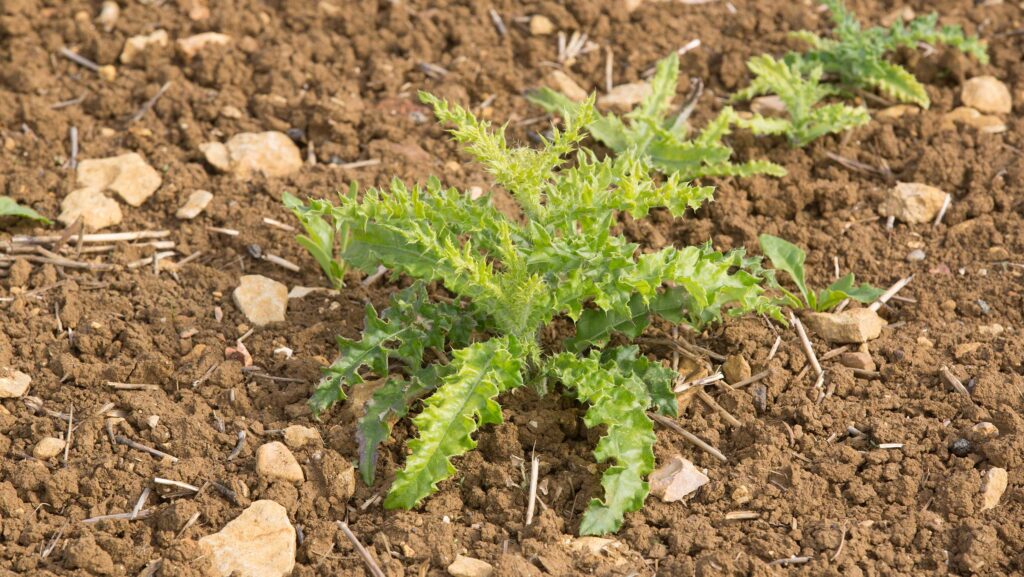Expert tips for chemical-free thistle and dock control
 © Tim Scrivener
© Tim Scrivener Mechanical topping just before flowering is one of the best non-chemical methods of controlling major troublesome perennial weeds such as creeping thistles and broad-leaved docks.
This pre-flowering period is when the weeds are at their most vulnerable, and so is best for mechanical cutting up the weeds into small fragments, says Lynn Tatnell, weed control specialist at crop consultant Adas.
See also: Why propyzamide use in OSR and beans remains in the balance
“Top them just before flowering as their plant reserves are at their lowest just before flowering,” she told Farmers Weekly at Groundswell 2025 (2-3 July).
Creeping thistles spread via seed and their deep rooting rhizomes, and a single plant can produce as many as 5,000 seeds.
“If you allow creeping thistles to shed seed, they will be there for a long time,” she added.
Lynn said growers should exploit the weaknesses of thistles by topping the plants when their reserves are low at pre-flowering, and if the weed is chopped into fragments of less than 2.5cm it will not survive.
Thistles also dislike hot and dry conditions.
Docks can be even more prolific, with the spread coming from shed seed and root fragments, and one plant can produce up to 60,000 seeds.
“The key with docks is to stop them from seeding and leave no gaps for them to establish in any growing crop,” she said.
Lynn pointed out that mob grazing is “brilliant” for control of the two weed species, and the aim should be to never let the grass get too low for the weeds to re-establish.
Cattle, sheep and goat grazing is good for weed control, but horses graze pasture too short and can weaken the potentially smothering swath and let the weeds recover.
In any rotation, pasture and crops should be encouraged to crowd out docks, and drainage needs to be good as docks like wet ground.
“Any areas of bare soils will encourage docks,” she said.

